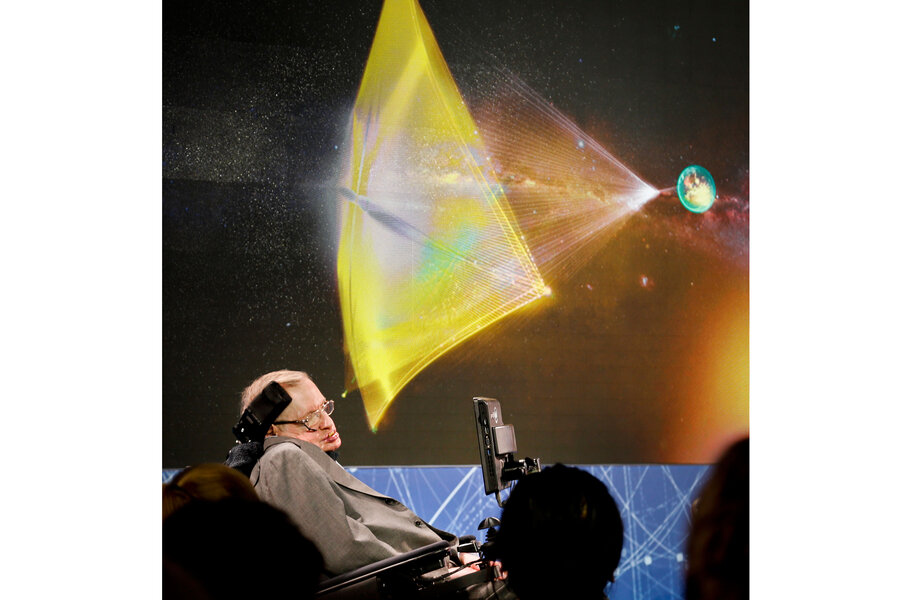Why Stephen Hawking's robot mission to Alpha Centauri may face obstacles
Loading...
A new plan to use laser propulsion to send miniature spaceships to the nearest star is daring, innovative, and absolutely fraught with obstacles.
The proponents of the Breakthrough Starshot plan – physicist Stephen Hawking, Russian billionaire Yuri Milner, former NASA research director Pete Worden, and Facebook CEO Mark Zuckerberg – listed 25 challenges on the Breakthrough Initiatives website to encourage the collaborative innovation needed to overcome them.
Some physicists and science writers have already obliged with thorough critiques, but the seriousness with which they are analyzing the scientific long shot shows how interested they are in the plan.
Most of space is empty, but the odds of the tiny spaceships hitting something on their way to the stars is still quite large, even assuming the unprecedented force of acceleration did not ruin their electronic capabilities, Jesse Emspak wrote for Space.com. The very laser that propels the spaceships to the stars could easily overpower and destroy them.
"You're pumping a lot of energy into this object," Jonathan McDowell of the Harvard-Smithsonian Center for Astrophysics, told Space.com. "You'd better hope 99.9 percent of it gets reflected."
From a technological standpoint, this strategy solves many of the problems traditionally associated with such long-distance space travel, Ethan Siegel wrote for Forbes:
The majority of power/energy used for this doesn’t come from one-time-only use rocket fuel, but rather from lasers, which can be recharged. The masses of the starchip spaceships are incredibly low, and so can be accelerated to very fast (close to the speed-of-light) speeds. And with the advent of miniaturization in electronics and ultra-strong, lightweight materials, we can actually create usable devices and send them light years away.
Logistical concerns abound, however. Although these tiny emissaries would travel at extreme speeds, communication technology is limited by light speed, Geoff Brumfiel wrote for NPR. This means that a probe's distress call from one light-year away would not reach headquarters until long after it had either fixed itself or died.
Other concerns range from international relations – who gives the permits for city-sized laser arrays shooting spaceships through the sky? – to cost.
Mr. Milner, who founded Breakthrough Initiatives with his wife, Julia, to champion the search for extraterrestrial life, has offered the project $100 million for starters. Forbes estimated that provides less than 1 percent of the budget for building and execution, apart from technological development.
On a more mundane level, the project also has enormous costs in time. The estimated timeline to develop and build the laser array and spaceships is 20 years. Add another 20 in travel time after that, and the project needs generations of scientists, administrators, and interns.
The real clincher, though, is what happens when the spaceships reach their destination. A communications device capable of transmitting so much as a few grainy selfies with Alpha Centauri back to Earth would be much larger than the proposed sail-ships, or even the iPhone 6 Plus.
But for now, the scientific payoff is the very criticism the project is getting, as some of the greatest scientific thinkers of the age dig deeply into the theoretical and practical challenges facing the tiny spacecrafts.
"When physicists start to pick it apart, it's a way we show the love," Dr. McDowell told Space.com








